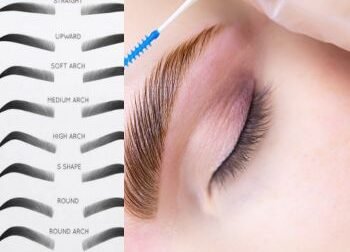Why Choose a Face Cleanser with Glycolic Acid?
- August 12, 2024
- Uncategorized
- 7 mins read
Why Choose a Face Cleanser with Glycolic Acid?
When it comes to skincare, selecting the right face cleanser can make a significant difference in your skin’s health and appearance. Among the various options available, a face cleanser with glycolic acid stands out for its remarkable benefits. Glycolic acid, an alpha hydroxy acid (AHA), has gained popularity for its ability to transform the skin. In this blog, we will explore why incorporating a face cleanser glycolic acid into your routine could be a game-changer for your skin.
What is Glycolic Acid?
Glycolic acid is a naturally occurring acid derived from sugarcane. It is renowned for its small molecular size, which allows it to penetrate the skin effectively. This penetration aids in exfoliation, helping to remove dead skin cells and reveal a brighter, more even complexion. When used in a face cleanser glycolic acid, it offers several benefits that contribute to a clearer and more youthful appearance.
The Benefits of Using a Face Cleanser with Glycolic Acid
1. Exfoliation
One of the primary benefits of a face cleanser glycolic acid is its exfoliating properties. Glycolic acid gently sloughs off dead skin cells, which can accumulate on the surface of your skin. This process helps to prevent clogged pores and reduce the appearance of dullness. By incorporating a face cleanser glycolic acid into your skincare routine, you can achieve a smoother and more radiant complexion.
2. Improved Skin Texture
Regular use of a face cleanser glycolic acid can significantly improve skin texture. The exfoliating action helps to smooth out rough patches and refine the skin’s surface. As a result, your skin feels softer and looks more even. If you struggle with uneven texture or rough patches, a face cleanser glycolic acid can be an effective solution.
3. Enhanced Radiance
A face cleanser glycolic acid is known for its ability to enhance skin radiance. By removing dead skin cells and promoting cell turnover, glycolic acid helps to reveal fresh, glowing skin. This can be especially beneficial for those with dull or lackluster skin. Regular use of a face cleanser glycolic acid can contribute to a brighter and more luminous complexion.
4. Reduced Appearance of Fine Lines and Wrinkles
Glycolic acid is also praised for its anti-aging benefits. By stimulating collagen production and promoting cell renewal, a face cleanser glycolic acid can help reduce the appearance of fine lines and wrinkles. Over time, this can lead to smoother and more youthful-looking skin. If you’re concerned about signs of aging, incorporating a face cleanser glycolic acid into your routine may be a wise choice.
5. Minimized Pore Appearance
Another advantage of using a face cleanser glycolic acid is its ability to minimize the appearance of pores. By exfoliating the skin and preventing the buildup of debris, glycolic acid helps to keep pores clear and less noticeable. This can result in a more refined and polished appearance, especially for those with enlarged pores.

How to Incorporate a Face Cleanser with Glycolic Acid into Your Routine
1. Choose the Right Product
When selecting a face cleanser glycolic acid, it’s essential to choose a product that suits your skin type and concerns. Look for a cleanser with a concentration of glycolic acid that is appropriate for your skin. For sensitive skin, start with a lower concentration and gradually increase as tolerated.
2. Use it Consistently
To experience the full benefits of a face cleanser glycolic acid, consistency is key. Incorporate it into your daily skincare routine, using it once or twice a day as directed. Consistent use will help you achieve the best results and maintain healthy, glowing skin.
3. Follow with a Moisturizer
After using a face cleanser glycolic acid, follow up with a moisturizer to keep your skin hydrated. Glycolic acid can be slightly exfoliating and may leave your skin feeling dry. A good moisturizer will help to replenish and lock in moisture, ensuring that your skin remains balanced and comfortable.
4. Use Sunscreen
Glycolic acid can make your skin more sensitive to the sun. To protect your skin from potential sun damage, always apply sunscreen during the day. Look for a broad-spectrum sunscreen with an SPF of 30 or higher to safeguard your skin from harmful UV rays.
Possible Side Effects and Precautions
While a face cleanser glycolic acid offers many benefits, it’s essential to be aware of potential side effects. Some individuals may experience mild irritation, redness, or dryness when using glycolic acid. To minimize these effects, start with a lower concentration and gradually increase as your skin becomes accustomed.
If you have sensitive skin or are prone to allergic reactions, perform a patch test before using a new product. Additionally, if you experience severe irritation or discomfort, discontinue use and consult with a dermatologist.
Conclusion
A face cleanser glycolic acid is a powerful addition to any skincare routine, offering a range of benefits from exfoliation to improved radiance. By incorporating this ingredient into your daily regimen, you can achieve smoother, more even-toned skin and address various skin concerns. Remember to choose the right product for your skin type, use it consistently, and follow up with proper hydration and sun protection. With these practices in mind, you’ll be well on your way to enjoying the transformative effects of a face cleanser glycolic acid.
Glycolic acid is an alpha hydroxy acid (AHA) derived from sugarcane. It is used in skincare products for its exfoliating properties, helping to remove dead skin cells and promote a brighter, smoother complexion.
A face cleanser glycolic acid works by gently exfoliating the skin’s surface, removing dead skin cells, and improving skin texture. It helps to unclog pores, reduce dullness, and reveal a fresher, more radiant appearance.
Using a face cleanser glycolic acid offers multiple benefits, including exfoliation, improved skin texture, enhanced radiance, reduced appearance of fine lines and wrinkles, and minimized pore appearance.
Typically, a face cleanser glycolic acid can be used once or twice daily, depending on your skin type and tolerance. Start with a lower frequency to see how your skin reacts and adjust as needed.
Yes, a face cleanser glycolic acid can be used on sensitive skin, but it’s essential to choose a product with a lower concentration of glycolic acid. Start with a patch test and gradually increase use to avoid irritation.
Possible side effects include mild irritation, redness, or dryness. To minimize these effects, start with a lower concentration and use it gradually. Always follow up with a moisturizer and sunscreen to protect your skin.
It’s best to avoid using other exfoliants, such as scrubs or products with retinoids, simultaneously with a face cleanser glycolic acid to prevent over-exfoliation and potential irritation.
Results can vary, but many people notice improvements in skin texture and radiance within a few weeks of consistent use. For more significant changes, such as reduced fine lines, it may take a few months.
Yes, using sunscreen is crucial when incorporating a face cleanser glycolic acid into your routine. Glycolic acid can increase your skin’s sensitivity to the sun, so applying a broad-spectrum sunscreen with SPF 30 or higher is essential.
A face cleanser glycolic acid can help with acne by exfoliating dead skin cells that may clog pores and contribute to breakouts. It also helps to improve overall skin texture and reduce post-acne marks. However, for severe acne, consult a dermatologist for personalized advice.



